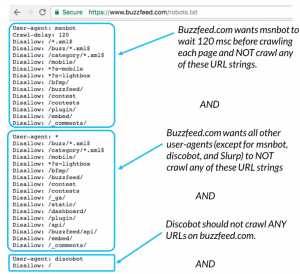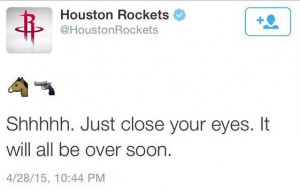Virtually all forms of business planning slip into the same problem.
It doesn’t matter if you’re formulating a plan for a new business idea, a technological innovation, or a marketing initiative, your plan tends to constellate around a set of to-dos.
And while your to-do-list-driven plan may help distribute various activities to different team members, it doesn’t guarantee that you’re achieving your business goals.
To-Do Lists are the Status Quo
To-do lists are itemized actions.
When you go grocery shopping, you have a list of items. When you have all of those items in your cart, you know your job is done.
We use itemized task lists in our business initiatives, project plans, and daily activities in the same way.
We complete an action and then cross it off our list (or click a checkbox on an app).
So what’s the problem?
Our focus tends to be on finishing a task so we can mark it completed. With a host of tasks, we shift our mind from task to task.
But in the process, we often lose sight of the end game—the main result that’s important.
As Peter Drucker explains in The Effective Executive:
“Productivity for the knowledge worker means the ability to get the right things done. It means effectiveness. Knowledge work is defined by its results.”
To-do lists drive us towards actions, not necessarily results.
With to-do lists, we tend to confuse busyness with business. We easily mistake activity for productivity.
Avoid Getting Stuck in a To-Do-List Mindset
It’s difficult to appreciate how conditioned we are to think and operate within a to-do-list mindset.
Almost all productivity and reminder apps, as well as project management software, are built around checking off tasks or to-dos.
But the real driver behind this issue is in our habitual thoughts and emotions.
Crossing off to-dos hits on our basic human need for esteem. It gives us a feeling of significance.
When we complete a task or cross something off our list, it gives us a false sense of accomplishment.
If you pay attention to what your mind says when you cross something off a list, you might hear:
There, it’s done. I did it.
I got it out of the way.
It’s not on my plate anymore.
I did such a good job.
Our culture prides itself on activity: the busier the better. Often, the more we have on our plate and the more we accomplish, the more significance (pride) we feel.
Simply being aware of this conditioning can help lessen its hold on us.
A Results Mindset Yields Many Rewards
The key to moving beyond to-do-list thinking is to direct greater attention toward the end result.
You’ll be surprised how often the end result isn’t clearly articulated in advance. And that’s the primary issue.
In the absence of a clear result—without some kind of end vision—you and your team get swept up in a sea of activities by default.
With a results-driven mindset, you and your team will:
- Stay perpetually connected to a larger, shared vision
- Evaluate complex problems with greater clarity
- Conduct shorter and more effective meetings (this is benefit enough!)
- Make more intelligent business decisions
- Be more effective at operating as a collective whole, serving your customers, and growing your business
Distractions plague every workplace. Anything you can do to reduce these distractions and increase focus is likely to improve your ability to get the right things done.
A results mindset helps you cut through the clutter and focus your resources on what matters most.
How to Adopt a Results Mindset
To-do-list thinking is the default for all of us. It was conditioned into our minds without our awareness.
A results mindset has to be conditioned into our minds consciously.
How? Change your internal focus by asking different questions.
We focus on tasks and actions because the subconscious question in our minds is: What do I have to do now?
Instead, we’re going to ask a new and more resourceful question: What’s the actual result I’m after here?
When you’re working with your team, ask, What is the end result we want to achieve with this project?
When conducting a meeting, inquire, What’s the outcome of this meeting? Bring the team’s attention back to the result if they begin to stray.
You’re priming your mind and the minds of your people to focus on the end result.
Allow yourself and your team to really connect with the business’s end vision, to see it and feel it. Let the goal come to life within everyone’s imagination.
Next, ask: What are the conditions that need to be set in order to realize our desired result?
Now, brainstorm a master list of possibilities, tasks, and actions.
Keeping the end result firmly in mind, you’ll find that not all of your ideas are necessary to achieve the result. Eliminate those.
Focusing on the end result is a habit. In The 7 Habits of Highly Effective People, author Stephen Covey called this habit, “Begin with the end in mind.”
Keeping the end picture in mind, you’ll often unearth other ideas that don’t come to mind when you’re simply focused on a list of activities and action steps.
Your Leadership Objective: Foster a Results-Driven Culture
Any progress you and your team make towards adopting a results mindset will measurably improve your effectiveness over time.
As a leader, you can cultivate a culture that values investing time envisioning the big picture instead of jumping into an endless series of tasks and activities.
Clarity is the remedy for busyness. Superior results come to those leaders who know what they want.
Originally published on scottjeffrey.com.
Business & Finance Articles on Business 2 Community(52)






